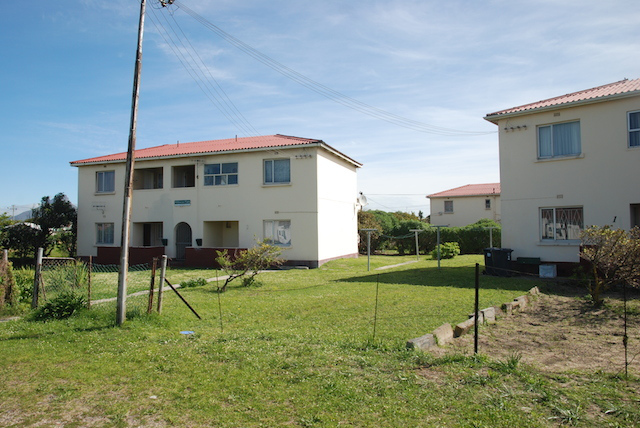
When you are living on an income of R1 500 per month and you are able to cut your electricity bill by R200 per month, it is a significant saving. For tenants living in social housing, it can mean the difference between affording their rent or returning to a backyard shack or the streets.
The WWF Nedbank Green Trust is aware of this and supports social housing institutions by helping to fund green technologies that can lead to electricity savings and a better quality of life for the tenants.
The joint project with the National Social Housing Association, with the support of the Social Housing Regulatory Authority (SHRA), includes a pilot green retrofit currently being rolled out in Cape Town. A pilot new green build is planned for Gauteng.
The green retrofit is being done on 20 units at five ageing double-storey apartment blocks in Brooklyn (near Milnerton) called Boom Flats. The new green build of 20 units, called Fleurhof, is in a social housing precinct near Soweto. Construction is scheduled to begin early in 2015.
‘In preparation for the Boom Flats green retrofit we launched a tenant engagement initiative led by Jocelyn Muller, who has been contracted by WWF-SA,’ explains project leader Louise Scholtz, the Manager of Special Projects in the Living Planet Unit at WWF-SA.
‘This is key to the long-term success of the project as you cannot impose green technology on people without getting buy-in from them. What we are doing instead is partnering with social housing tenants on a green journey that will save them money and improve their health and life quality.
‘A project like this, where we combine the technical green retrofit or new build with tenant engagement, has never been undertaken before in South Africa.’
The Boom Flats tenants are a mixed group of people comprising all the demographics in South Africa, including a wide range of ages – from elderly people who have lived there all their lives and are surviving on a government pension grant, to young couples on joint incomes of a few thousand rand. Many of these tenants have been on a financial knife-edge throughout their lives.
The retrofit includes solar geysers, building insulation, water-wise installations (eg showers, dual-flush mechanisms and showerheads), wall-panel heaters that use minimal electricity and certain infrastructural changes, such as a window on a north-facing wall for more light and warmth.
All products used in the retrofit are quality-approved and they ensure warmth and comfort for the tenants while reducing their monthly costs.
‘Greening is about holistically empowering people to improve the quality of their lives,’ Muller explains. ‘In addition to the technical issues, there are so many other green issues that we are addressing, including the amount of chemical detergents the tenants use and the type of food they eat. Significant changes can take place in many aspects of their lives.’
In an attempt to advance community knowledge about all the aspects of greening, the project has appointed green stewards among the tenants.
One of the green stewards is Martin Swanepoel, a pensioner who lives in a one-bedroom flat at Boom Flats with his wife, Hester.
‘He has shown incredible initiative,’ says Muller. ‘Several months ago he started monitoring his electricity usage in great detail, including working out how much each item uses, such as his kettle and geyser.
‘From this we’ve been able to calculate his hourly electricity usage based on the wattage used by each appliance for a particular time period. We’ve been able to show him how this correlates with peaks in his electricity consumption, and he has since been able to bring down his electricity cost by R50 to R100 a month without compromising his needs.’
He has done the same for his water usage and is keeping a record of his waste according to type (eg plastic, bottles and organic) and amount (eg how often he fills one plastic shopping bag).
Swanepoel has also established his own vegetable garden. ‘It’s a tiny garden but because of it his wife doesn’t need to buy certain vegetables anymore, and this is saving them money,’ Muller continues. It’s rapidly transforming into a community garden with compost and seedlings donated to the tenants.
He is giving vegetables to neighbours, with whom he has made contact for the first time since becoming a green steward, and he attends weekly capacity building meetings.
‘An important part of greening is the community connect,’ Muller explains. ‘Many people in Boom Flats have never met their fellow tenants even though they have all lived there for years. Sharing and developing a sense of community are an important part of greening.’
Article by: Heather Dugmore
Article Source: BizNews
